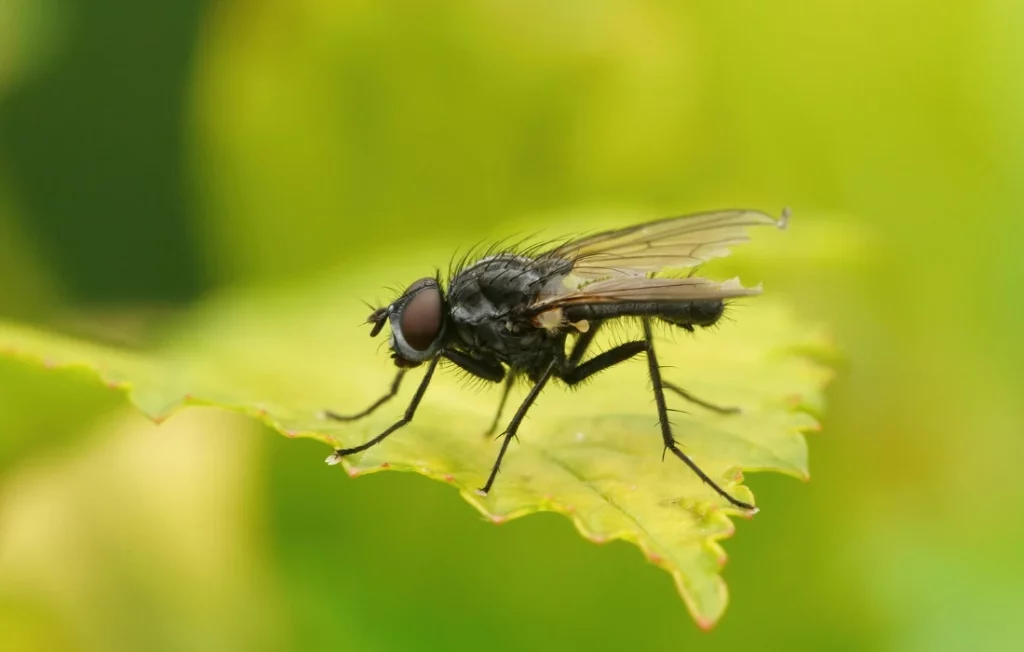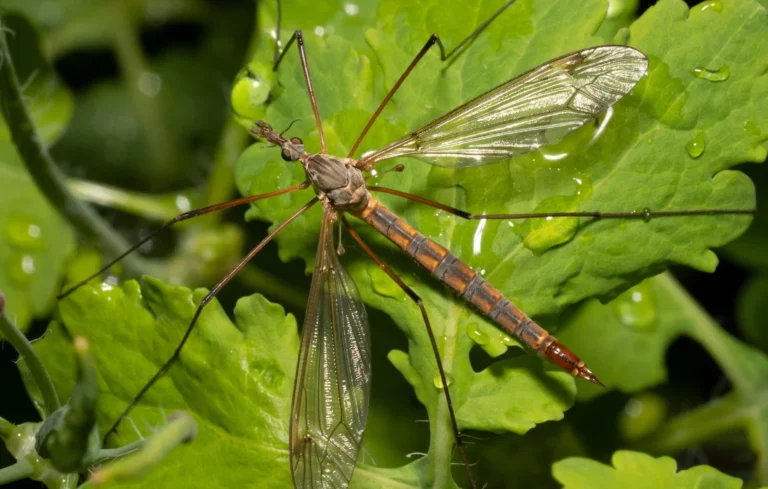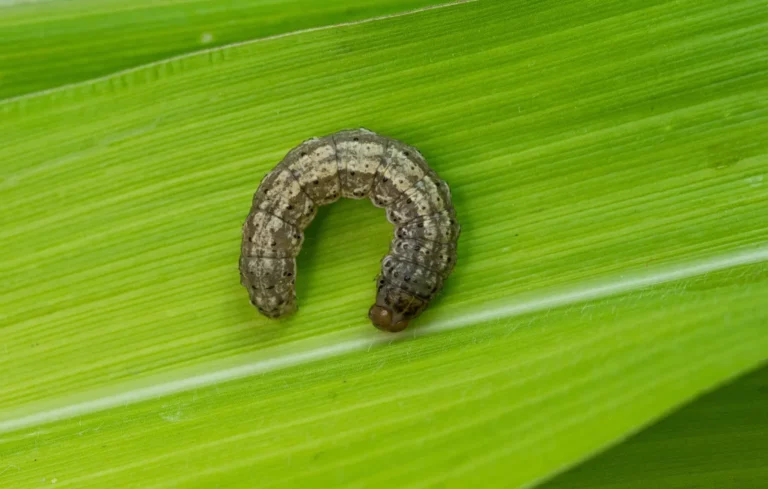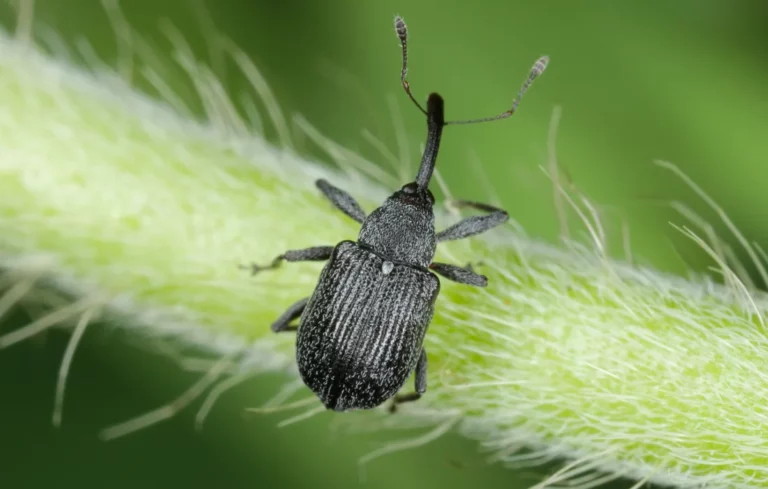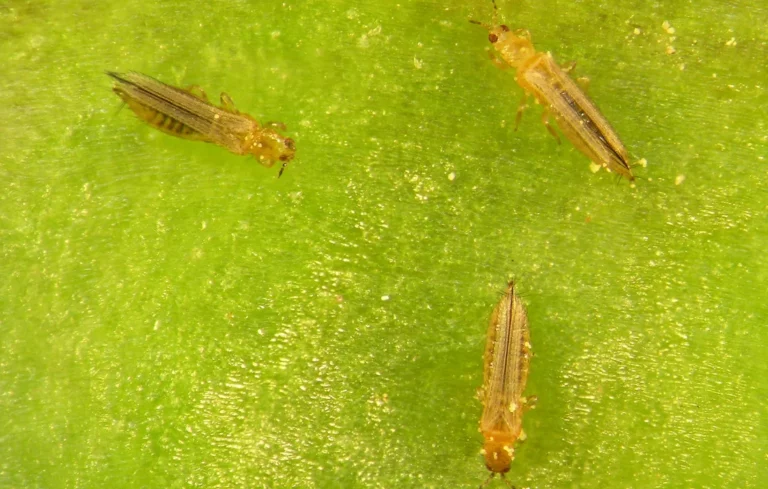The seedcorn maggot, Delia platura , poses a major threat to vegetable and fruit crops. A polyphagous species, it feeds on both decaying organic matter and cultivated plants. Its larvae directly attack germinating seeds and young plants, causing significant losses. Farmers, market gardeners, and horticulturalists are well aware of the difficulty of dealing with it, as this pest acts from the early stages of crop development.
Agrobiotop , a European expert in agrobiology, supports agricultural professionals in the implementation of integrated protection strategies.
The seedcorn maggot, a polyphagous and dreaded pest
The seedcorn maggot also known bean seed fly, scientifically known as Delia platura , belongs to the Anthomyiidae family . This dipteran is recognized as one of the most feared pests of vegetable and field crop seedlings. Its ability to survive in varied environments and attack a large number of host plants makes it a difficult insect to control without an appropriate strategy.
What are the host plants?
The seedcorn maggot is capable of attacking more than 40 cultivated species. Its most common hosts are beans, melons, cucumbers, spinach, asparagus, tomatoes, cereals, corn, soybeans, tobacco, radishes, turnips, onions and potatoes .
This host diversity increases the risk for farms practicing short rotation or intensive cultivation.
Do you need a solution against seedcorn maggot ?
Morphological description of the seedcorn maggot
The adult measures between 3 and 6 mm. Its appearance is reminiscent of a housefly, with a yellowish-grey thorax, an abdomen marked by a brownish band, black legs and slightly reddish eyes. Its wings are light and its dark body has bright reflections.
The egg, pearly white and spindle-shaped, measures about 1 mm. The larva, a creamy-white, legless and headless maggot, reaches 5 to 8 mm. It has black mouth hooks. The pupa, reddish-brown in color, is oval and measures about 5 mm.
This morphology, close to that of other species of the genus Delia, sometimes makes identification difficult in the field.
Distribution and presence
Originally from Europe, Delia platura has spread worldwide. It is now present in North America, Asia, and many intensively cultivated areas.
In southern regions, adults remain active throughout the year. In temperate zones, the first flights appear in late winter, with peak intensity in spring, a critical period for sowing.
Delia Platura’s Development Cycle
The seedcorn maggot develops between 3 and 6 generations per year, depending on climatic conditions. The pupae overwinter in the soil, sometimes several centimeters deep. In spring, the females emerge and lay several hundred eggs, isolated in the soil, without the need for nearby plants.
Moist, organic-rich or freshly worked soils are particularly attractive to females.
After a few days, the eggs hatch and the larvae begin their activity. Larval development lasts about three weeks, during which time they attack seedlings and seedlings. As the plant strengthens and its tissues harden, its attractiveness decreases.
The critical phase corresponds to the three to four weeks following sowing, when young plants are most sensitive. After pupation, the adults resume the cycle and new generations appear.
Symptoms and damage of the seedcorn maggot
The damage caused by the seed fly is mainly linked to the activity of the larvae, which directly attack the young stages of crops. The signs observed in the field are characteristic and result in:
- Attacks on germinating seeds, cotyledons, stems and roots of young plants.
- Wilting, yellowing and stunted growth.
- Poor emergence or lack of emergence.
- Damaged, dark or rotten seeds.
- Presence of white larvae at the base of the plants.
- Facilitated entry of pathogens responsible for rot.
- Burst and bitter shoots on asparagus.
- Destroyed cotyledons and weakened bean plants.
What are the aggravating factors of infestations?
- Freshly worked soils rich in organic matter.
- Low temperatures slow germination.
- Deep sowing delays emergence.
- Seedlings with low vigor, more vulnerable to attack.
Screening method
Monitoring involves regular field observations. Areas where emergence is irregular or absent should be examined as a priority. Uprooting seedlings can be used to check for galleries and larvae. Tubers can also be inspected to identify entry points.
The use of COLTRAP yellow sticky traps facilitates the detection of adults and makes it possible to anticipate periods of risk.
Agrobiotop solutions against the seed fly
Improve the nature of the soil
- SILIBOOST – Activates the mineralization of organic matter
- SOUFREL – Activates the mineralization of organic matter
Trap: biological control
Allows the presence of the seed fly to be detected
Seed coatings
Allows you to put a physical barrier (polymer) + repellent
- CHITOPROTECT (starter effect on seed emergence, accelerates germination)
- YAKASELF (repellent, physical barrier)
Dosage for 100 kg of seeds: CHITOPROTECT 100 ml + 900 ml YAKASELF, mix then let dry for a few minutes before sowing. Do not add water.
Treatment
Dosage: 10 liters / 100 liters of water / hectare
What agronomic measures are there to combat Delia Plantura?
- Delay sowing until spring when conditions are cool and moist.
- Increase seeding density to compensate for losses.
- Work the soil in the fall or before sowing to expose the pupae to adverse weather conditions and predators.
- Sow shallowly to accelerate germination and limit the period of sensitivity of the seedlings.
Photo : Shutterstock

